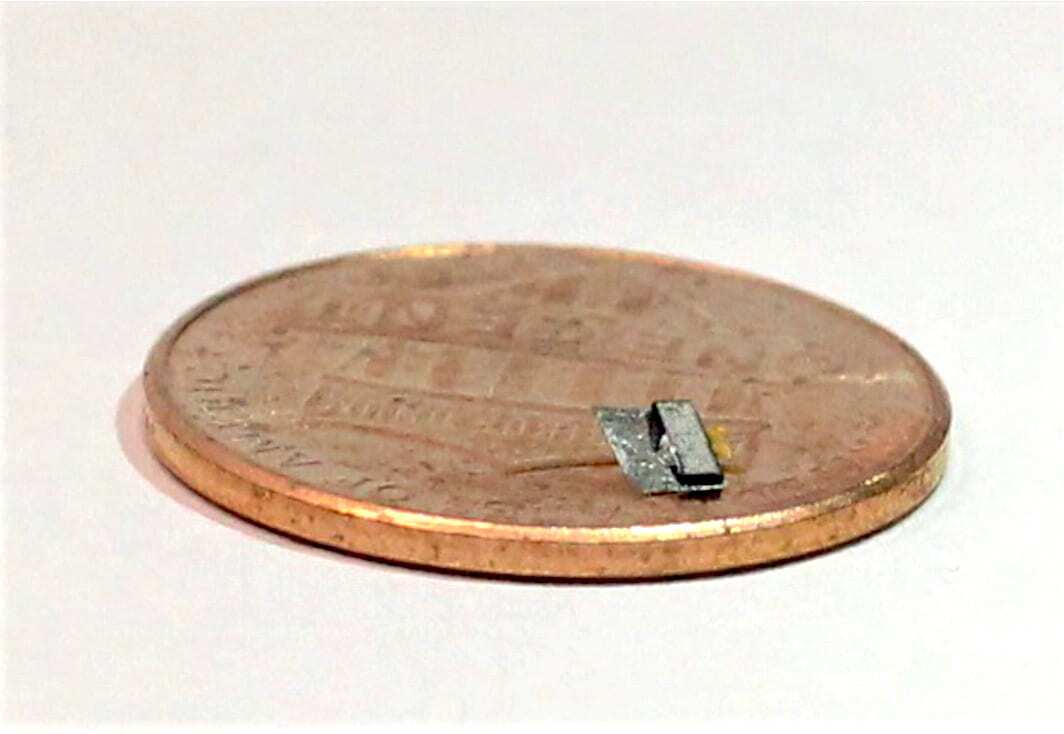
In a move that echoes a sci-fi series, researchers have developed a super-small material that was able to not only stimulate nerves in rodents, but reconnect them as well. The finding could lead to injectable particles that take the place of larger implants.
In creating the particles, researchers at Rice University started with two layers of a metallic glass alloy called Metglas and wedged a piezoelectric layer of lead zirconium titanate in between them. Piezoelectric materials generate electricity when they have mechanical forces applied to them. Metglas is a magnetostrictive material, which means it changes its shape when it has a magnetic field applied to it. In this case, the change in shape of the Metglas in the presence of magnetic pulses caused the piezoelectric material inside to generate an electrical signal. Materials that do this are known as magnetoelectric.
“We asked, ‘Can we create a material that can be like dust or is so small that by placing just a sprinkle of it inside the body you’d be able to stimulate the brain or nervous system?’” said lead author Joshua Chen, a Rice doctoral alumnus. “With that question in mind, we thought that magnetoelectric materials were ideal candidates for use in neurostimulation. They respond to magnetic fields, which easily penetrate into the body, and convert them into electric fields – a language our nervous system already uses to relay information.”
Magnetoelectrics have been investigated for use with nerves before. For example, one study in 2021 showed how magnetoelectric devices could relay signals from one to the other wirelessly, which could potentially replace the signaling ability of damaged neurons. However, a known issue with the neurological application of magnetoelectrics is that the signals the materials produce tend to be too fast for other human nerves to pick up.
To solve that, the Rice researchers built up the magnetoelectric film even more, adding platinum hafnium oxide, and zinc oxide to it. Despite this layered materials approach, the final film still only measured about 200 nanometers thick. (For comparison, a human hair measures about 90,000 nanometers wide.)

Robinson Lab/Rice University
Next they tested the material in rats and found that it could not only stimulate peripheral nerves in the rodents when they were under anesthesia, but that it could also restore function in a severed sciatic nerve. It also proved to operate about 120 times faster than similar materials that have been previously developed.
Not only do the researchers believe this holds promise for super-small, potentially injectable neuroprosthetics, but they feel it could have applications in other fields as well.
“We can use this metamaterial to bridge the gap in a broken nerve and restore fast electric signal speeds,” Chen said. “Overall, we were able to rationally design a new metamaterial that overcomes many challenges in neurotechnology. And more importantly, this framework for advanced material design can be applied toward other applications like sensing and memory in electronics.”
The research has been published in the journal Nature Materials.
Source: Rice University














